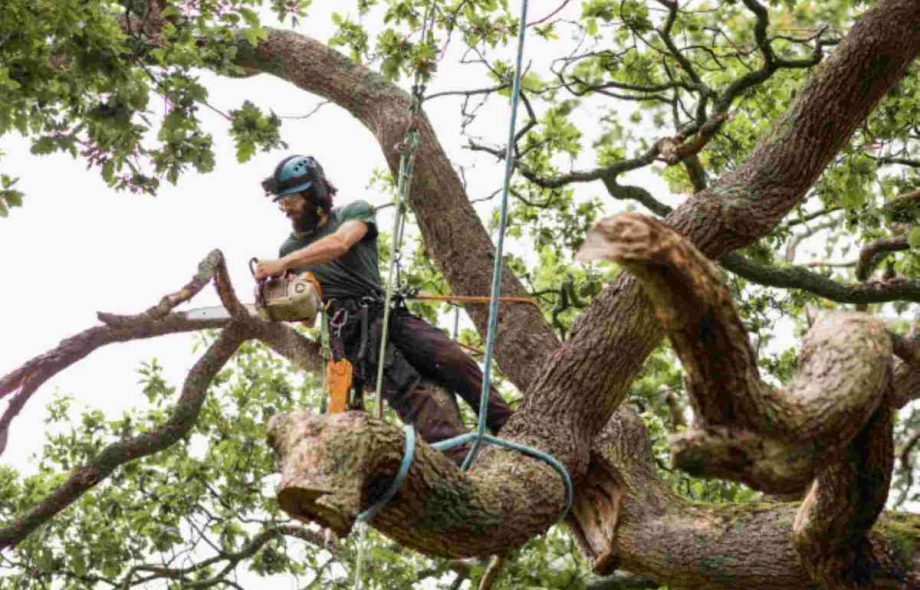Nature doesn’t always play nice. Storms roll in, winds pick up, and suddenly that huge tree in your yard is leaning dangerously close to your house—or worse, it’s already crashed down. When a tree becomes a sudden danger, emergency tree removal isn’t just necessary—it’s critical. This guide breaks down everything you need to know, from spotting the signs to knowing who to call and what to expect.
What is Emergency Tree Removal?
Emergency tree removal refers to the urgent removal of a tree that poses a threat to people, property, or public safety. This could be due to:
Storm damage
Tree disease or decay
Uprooted roots
Falling limbs after heavy rain or wind
Trees dangerously leaning toward a structure or power lines
When the clock’s ticking and the situation is risky, you need fast, professional help.
Common Reasons for Emergency Tree Removal
1. Storm Damage
High winds, lightning, and heavy snowfall can break limbs or uproot entire trees. After a storm, you might find debris scattered across your property—or worse, a tree embedded in your roof.
2. Sudden Tree Leaning
A tree that was standing tall yesterday might suddenly be tilting. This can mean its root system is compromised or the soil has shifted dangerously.
3. Cracks in the Trunk
Deep vertical cracks or splits in the trunk are signs of structural failure. These trees can break without warning.
4. Falling or Dead Branches
Large, dead limbs falling with no warning are a huge red flag. If it happens more than once, the tree might be dying or structurally weak.
5. Tree Uprooting
Soil erosion or water-logged ground can loosen roots and cause trees to topple. Uprooted trees must be removed quickly—especially if they’re near power lines or roads.
Signs a Tree Is at Risk of Falling
Sudden leaning
Exposed or damaged roots
Mushrooms or fungus growing at the base
Bark falling off or large cavities in the trunk
Visible rot or insect infestation
Heavy limbs overhanging your home or driveway
What to Do First in a Tree Emergency
Stay Safe – If the tree has fallen on a structure or power line, evacuate the area.
Call Authorities (if needed) – Contact emergency services if there are live wires or blocked roads.
Contact an Emergency Tree Removal Service – Look for 24/7 licensed professionals in your area.
Avoid DIY Removal – This isn’t the time for a chainsaw and guesswork. It’s dangerous without proper tools and training.
Who to Call for Emergency Tree Removal
Search for local tree services that advertise:
24/7 emergency availability
ISA-certified arborists
Experience with storm cleanup
Proper insurance and equipment
Pro tip: Save a trusted tree service contact in your phone before disaster strikes.
What to Expect During Emergency Tree Removal
Once professionals arrive, they will:
Assess the tree’s condition and stability
Plan a safe removal strategy
Use cranes, ropes, or climbing gear as needed
Haul away debris or leave it for insurance documentation
Most services can respond within hours, especially during storm season.
How Much Does Emergency Tree Removal Cost?
Emergency services often cost more than standard removal due to the urgency and risk involved. Here’s a rough idea:
Small tree: $300 – $700
Medium tree: $700 – $1,200
Large tree: $1,200 – $3,000+
Costs depend on tree size, location, complexity, and local demand (especially after storms).
Does Insurance Cover Emergency Tree Removal?
Sometimes, yes.
Homeowners insurance typically covers tree removal if the tree caused damage to a covered structure (like your home or garage).
If the tree simply falls in your yard without hitting anything, you may have to pay out of pocket.
Always check with your provider, and document the damage with photos before cleanup.
Emergency Tree Removal Near Power Lines
This is critical: never touch or approach a tree that’s near or tangled in power lines. Only your utility company or a licensed arborist with special clearance can handle this.
If you spot a downed tree and a power line, treat it as a live wire—call 911 or your utility company immediately.
How to Prevent Emergency Tree Removal in the Future
You can’t control nature, but you can reduce risk:
Schedule regular tree inspections
Prune weak or dead limbs
Remove diseased or leaning trees early
Monitor soil erosion near roots
Install lightning protection on valuable trees
A little maintenance goes a long way in avoiding a tree-related disaster.
Conclusion
Emergency tree removal isn’t something you ever want to deal with—but when you need it, quick action can save lives, money, and property. Keep your eyes open for the warning signs, stay calm in the moment, and always call in the professionals. Your safety isn’t worth risking on a DIY approach.
FAQs
1. How fast can emergency tree removal services respond?
Many offer 24/7 service and can arrive within 1–2 hours, especially in high-risk situations.
2. Can I remove a fallen tree myself?
It’s not recommended unless it’s very small and clearly safe. Fallen trees are unpredictable and can shift suddenly.
3. Will the city remove a tree if it’s blocking the road?
Yes, if the tree is on public property or poses a risk to public safety, the city or municipality usually steps in.
4. Should I call my insurance company first?
If your property is damaged, yes—take photos and contact your insurer as soon as it’s safe to do so.
5. Are there emergency tree services available 24/7?
Absolutely. Many tree care companies have emergency crews on call around the clock.


 :
: